After visiting the dense and somewhat frenetic new Chinese Garden at the Huntington I was feeling like I needed to unwind a bit. Fortunately a short walk at the Huntington delivers you from the Chinese Garden to the Japanese Garden.
Along the way, before you get to the garden itself, as if in a calculated attempt to transition the viewer from one garden to the next, you pass a couple blooming plants that have “Japan” in their species name. Although most of the camellias in bloom were the sansanquas, a few of the Camellia japonica plants were starting their bloom.
And there was this perky yellow species, Farlugium japonicum–with a plant label (Thank you!–I love my plant labels).
One of the first details that I noticed in the Japanese Garden was this walkway edge detail consisting of little loops of thin bamboo.
Whereas many of the hardscape elements in the Chinese Garden seemed to be built to last for the centuries–this photo shows one of the edging details there–the fragile little detail in the Japanese Garden appeared to be set up to celebrate the ephemeral.
All the approaches to the garden deliver the visitor to high vantage points overlooking plantings around a small pond. A moon bridge provides a focal point.
A recreated traditional upper-class Japanese home occupies the highest spot in the garden.
Its doors slide open so that the view from the house is of this garden. Standing outside, you can peer in and get a sense of how life indoors would look like and feel. This structure was moved to this site in 1912, so it and the gardens have been around many more years than the Chinese Garden next door.
Steps from the home lead down and then back up to a walled garden.
A broad walkway divides the garden into two parts. To one side is a symbolic garden of stones and raked gravel, or Karesansui.
To the other side is a simple planting of clipped azaleas, ginkgo trees and what I’m guessing is lawn. The lawn and the tops of the azaleas mounds, however, were covered with fallen leaves off the ginkgo trees. I loved this space in its simplicity and could have spent hours there.
A very few of the ginkgo trees still held on to their startling yellow leaves.
But most of the leaves on the ground were progressing from bright yellow to tan to brown.
Here’s a suggestion for the Huntington: How about setting up a ginkko hotline or RSS or Twitter feed? Desert parks commonly offer wildflower hotlines to alert you of peak flowering. Something similar to let you know when the falling leaves would be at their most spectacular would be great too. Still, it was a gorgeous effect, and it highlighted the natural process of bright yellow leaves aging into less colorful ones.
After the walled garden is a bonsai court containing some spectacular specimens in a simple, rustic setting. The Huntington is in the process of enlarging the display area to make room for more bonsai.
My last shots from the Japanese Garden are of two gorgeous stands of bamboo. A small grove adjacent to the “model home” has a small wooden pathway through it.
A more massive stand occupies a spot at the edge of the garden.
Inside the dark thicket Camellia sasanqua blooms.
What is it about a grove of bamboo that drives visitors to carve their initials into the culms? Grrrrrrr.
A final look at the rhythms and contrapuntal interplay in the bamboo…

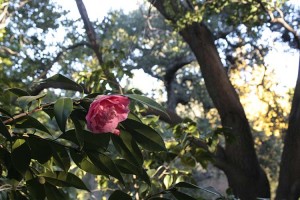



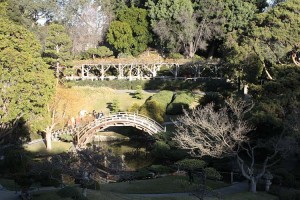




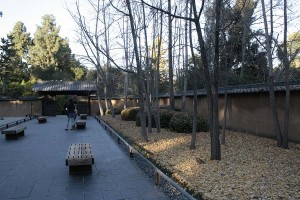
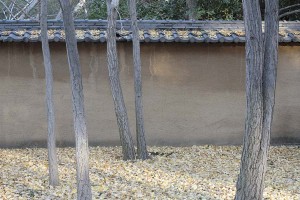







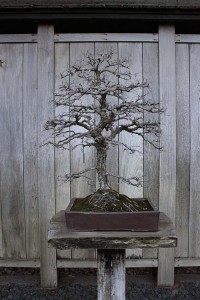






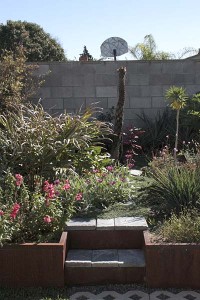
 Black peppermint willow (a.k.a. Australian myrtle willow), Agonis flexuosa ‘Jervis Bay Afterdark’
Black peppermint willow (a.k.a. Australian myrtle willow), Agonis flexuosa ‘Jervis Bay Afterdark’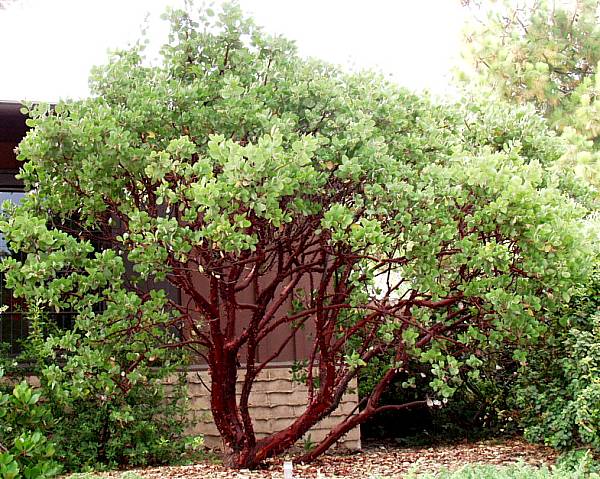 Dr. Hurd manzanita, Arctostaphylos x ‘Dr. Hurd’
Dr. Hurd manzanita, Arctostaphylos x ‘Dr. Hurd’